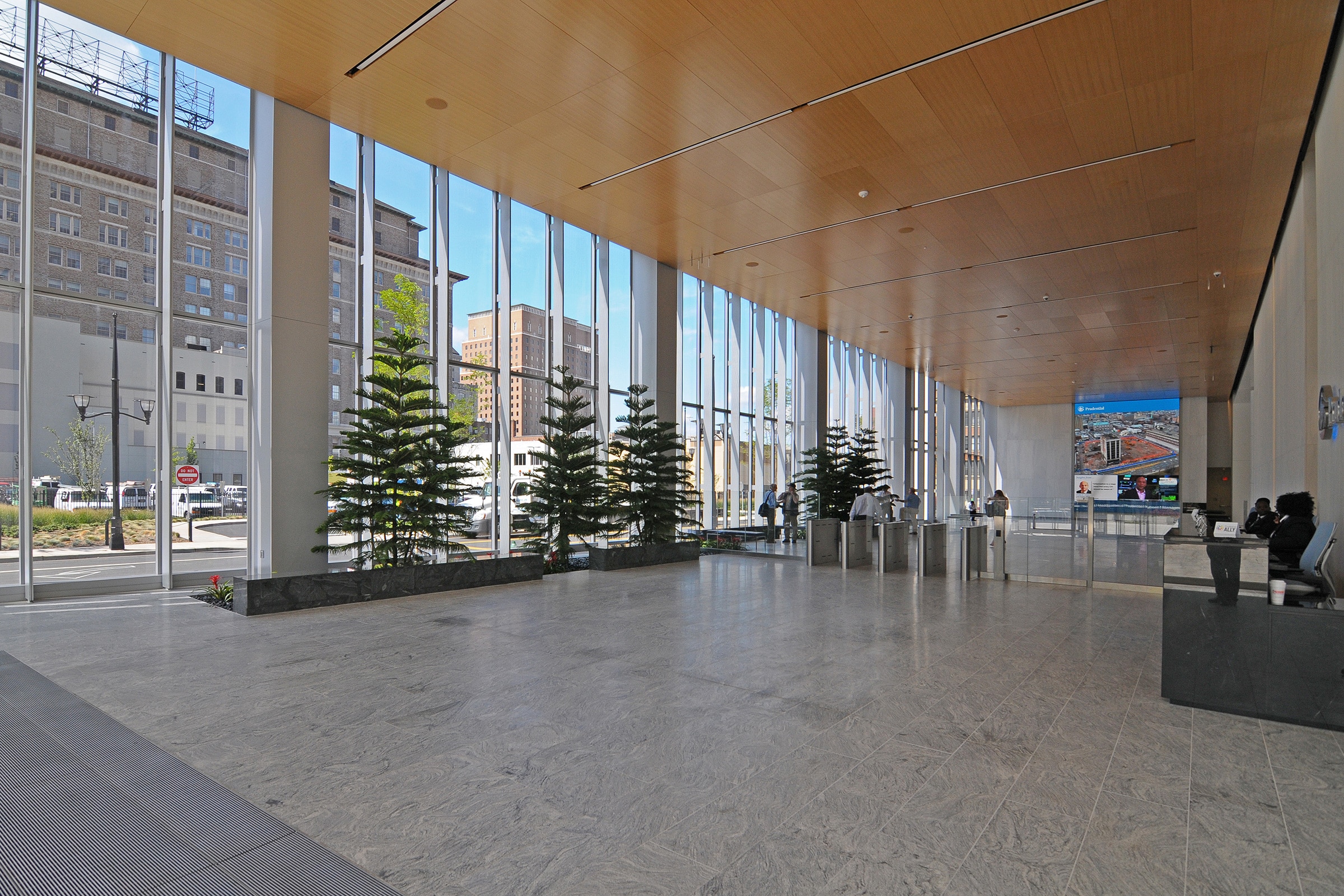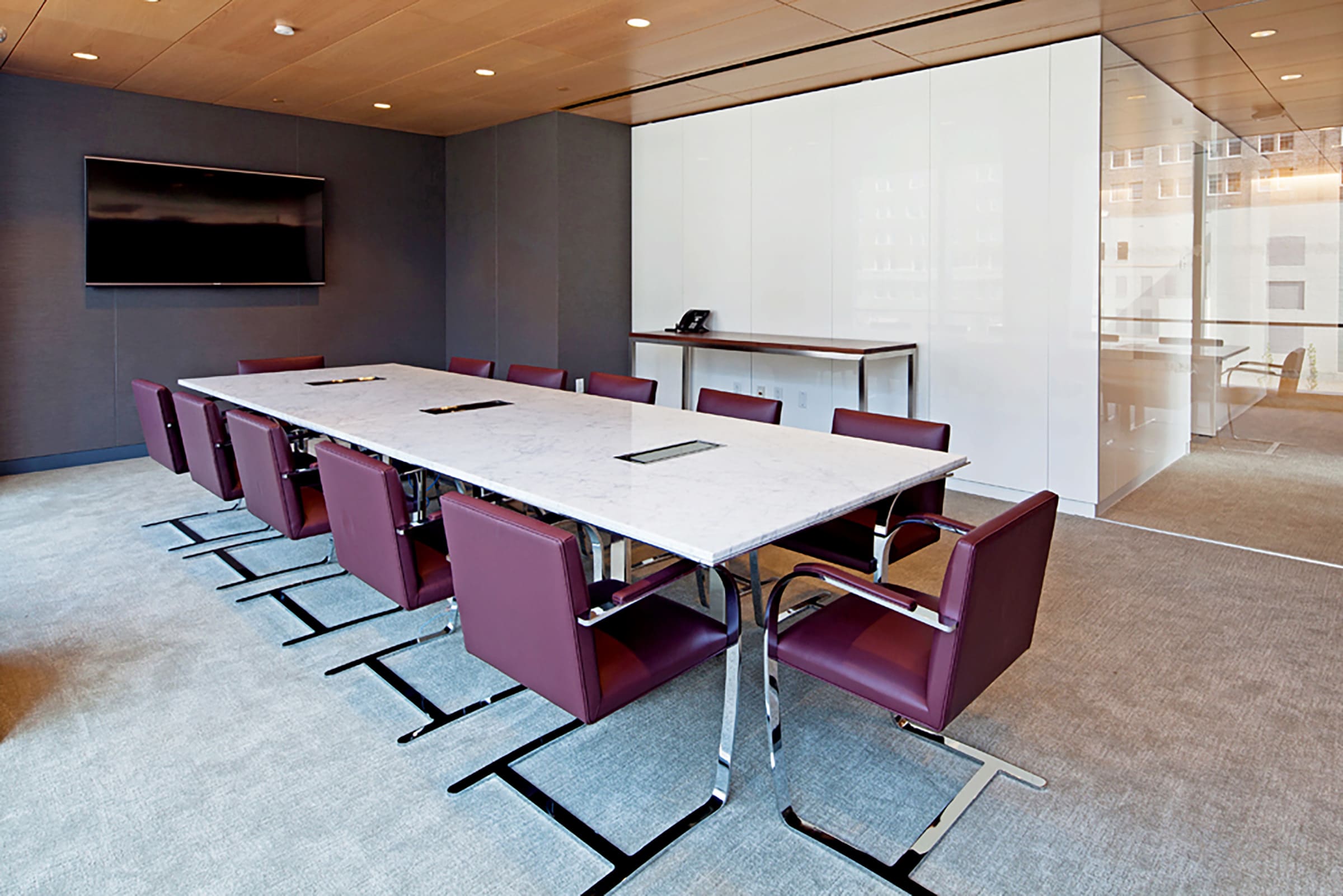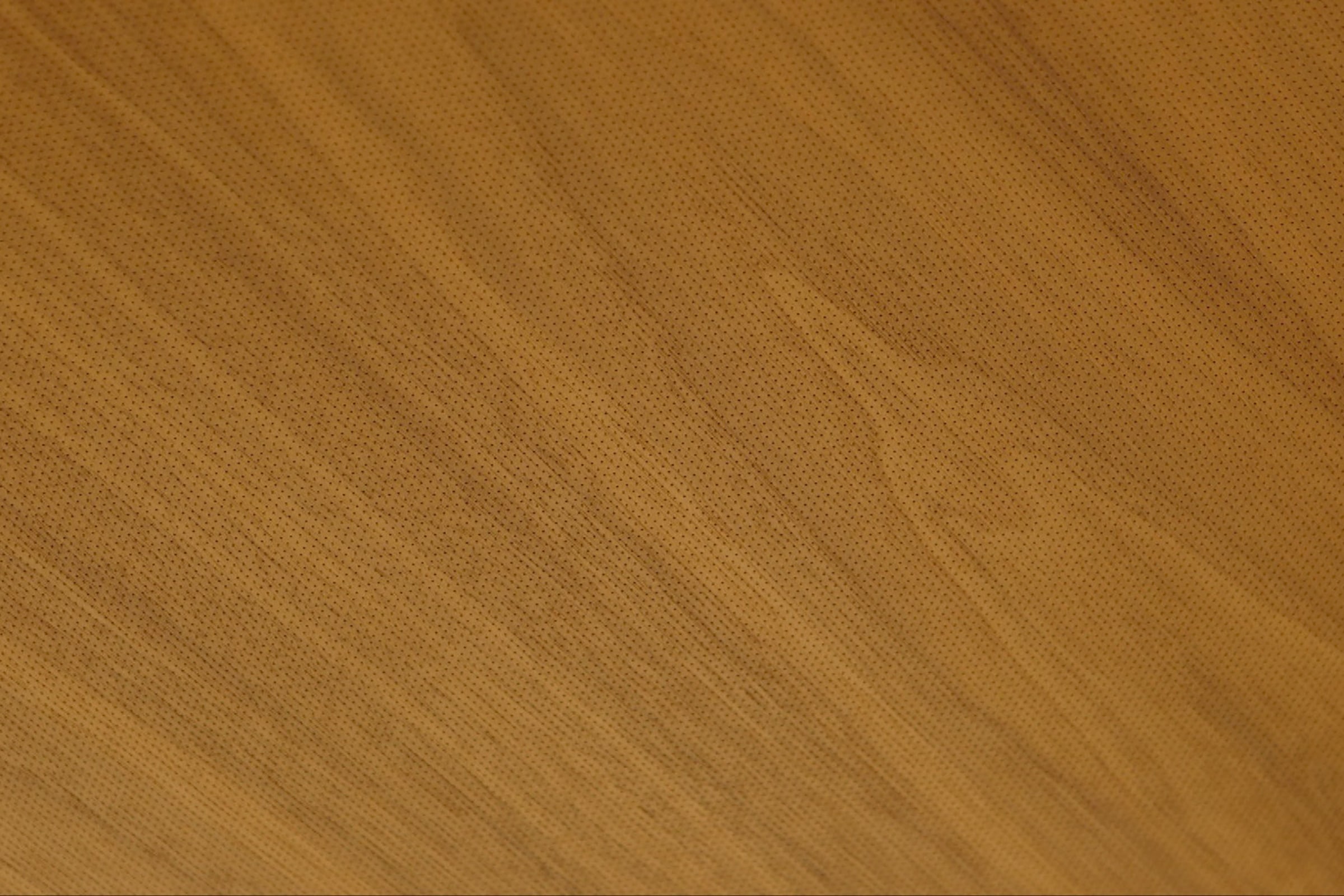
Alumiline helps manage sound and sets the tone in this office foyer. Photo courtesy of ASI
In many cases great design is completely invisible, and at Acoustical Surfaces Inc. (ASI), that’s the point.
“Sound is one of the survival mechanisms we depend on to let us know if we’re in danger,” says ASI’s Director of Marketing and Communications John Calder. “Most people don’t have a language of acoustics and sound,” he says, but this invisible aspect of the built health care environment can have profound effects on patients’ feelings of safety and comfort, even if they can’t explain why. “It’s just a feeling they get of unease,” he says. “But a quiet space is usually calming.”
Although the name of the umbrella company is Acoustical Surfaces, “we’re called on often to think about what’s underneath the surface, what’s really going on in the room,” Calder says. Whether it’s not being able to understand the information coming from the paging system in a waiting room or subconsciously noticing that the sound in a hospital hallway is unnaturally echoey and harsh, patients take all kinds of emotional cues from the sounds around them. “People need to feel safe, and comfortable, and calm. And a good sounding room will subconsciously add to that feeling,” Calder says.

Photo courtesy of ASI
High-Tech Solutions
ASI, along with its sister brands like ASI Architectural, offers products and services that aim to solve acoustical problems without creating aesthetic ones. Health care environments are full of easy-to-clean but hard surfaces, and those hard surfaces reflect sound waves very well. Echoes can add up, creating a tense atmosphere that puts patients and caregivers on edge. Acoustical products reduce the sound energy that bounces off a surface by absorbing or redirecting it.
SEE ALSO: What Patient-Centric Design Means at Cleveland Clinic
Calder says that even though unsightly foam products have come to be seen as the acoustical go-to, a nice sounding room doesn’t have to look like a recording studio. ASI uses a technique called microperforation to turn beautiful, natural-looking materials into acoustic panels. Each Microperf panel from ASI features a real wood veneer with thousands of tiny holes perforating its surface. These holes allow much of the sound energy that would normally bounce off the panel’s face to pass into a sound-absorbing fiberglass core, and because the holes are so small, you’d have to be inches away to see them. ASI also offers Silk Metal panels, which feature the same tiny holes perforating an aluminum panel. Silk Metal panels don’t require a sound-absorbent core, making them especially useful in a setting that requires deep cleaning. Either way, both Silk Metal and Microperf panels give designers the flexibility of high-aesthetic surfaces that also work to beneficially dampen sound.
For a bolder look, ASI Architectural also offers the Linear Alumiline or StrandTec coverings for ceilings and walls. Linear Alumiline features long aluminum planks that offer the toughness of extruded aluminum (an acoustical industry first) with spaces between each plank for sound to pass into a hidden acoustical backing. StrandTec is made of wood strands from renewable forests and portland cement pressed together using recycled water. This offers a sustainable, low-cost, versatile wall covering that can be custom-painted and cut to fit any design brief, all while mitigating unwanted echo and reverberation.

The lobby of the Prudential Tower in Newark, New Jersey incorporates Microperf technology to manage the sound generated in a bustling space. Photo courtesy of ASI
A Custom Approach
While ASI works to design products that solve problems, ASI Architectural works with clients directly to create custom solutions from scratch. “All of our stuff is made to order—we have zero inventory of finished products. So every one of our products gets run through a design phase with the architect or the design team,” says Chris Blanchard, national sales manager.
That custom approach allows for a huge amount of flexibility. On one end of the spectrum contractors can order materials they install themselves, and on the other end, the ASI Architectural team will work with designers through an iterative process that balances technical performance, budget, and design intent, while producing a supply of custom-made materials with site-specific shop drawings that dictate the placement of every panel and piece of custom hardware. In order to complete a seamless acoustical retrofit, ASI Architectural can stain their panels to match control samples, or they can even select a particular wood veneer from a particular veneer house, matching an existing veneer down to the very same log before turning it into an acoustical product. “It can be short and sweet, or it can be fairly complicated,” says Blanchard.
These kinds of services aren’t easy to come by. “It’s rare that you find an architectural or a design firm, or a contractor, certainly, that has an acoustician on staff,” says Calder. “We function, often, as the acoustical consultant on a lot of these jobs.” And while it may be tempting to think you can avoid design problems associated with sound by simply ignoring it, Calder warns we are more sensitive to sound than people realize. “You can close your eyes and go to sleep, but your ears are always on.”

This up-close view shows the tiny holes perforating the surface of the Microperf panels, which allow the sound energy to pass through to an absorbent material installed either above or behind. Photo courtesy of ASI

